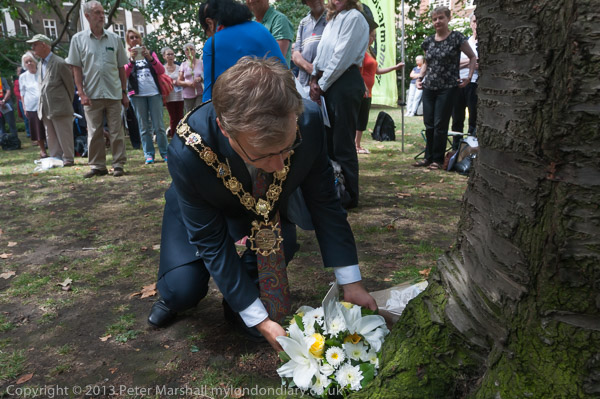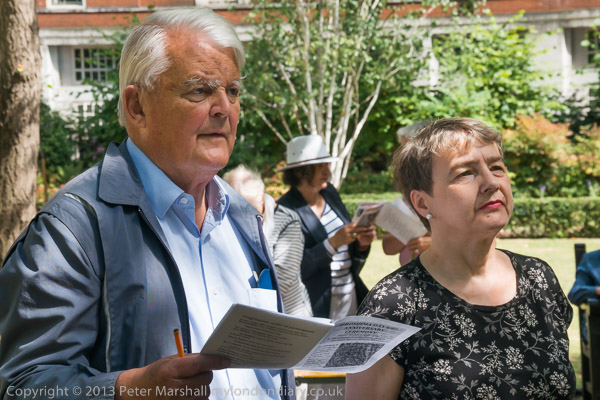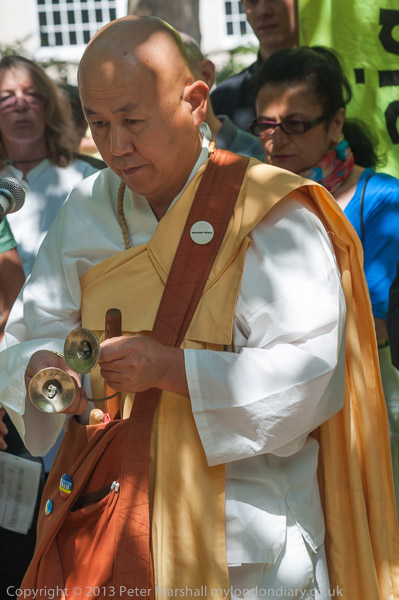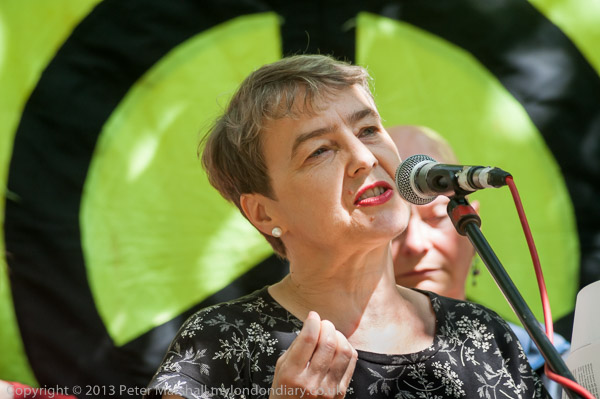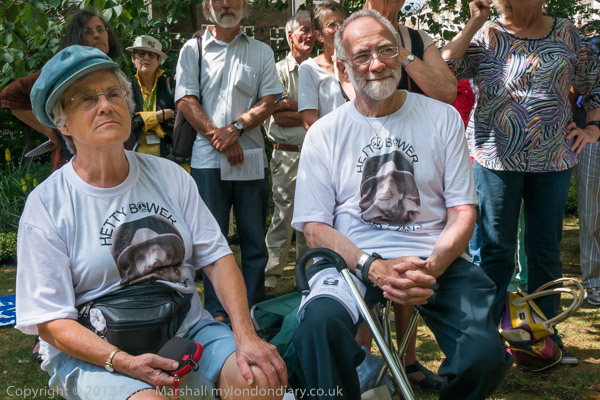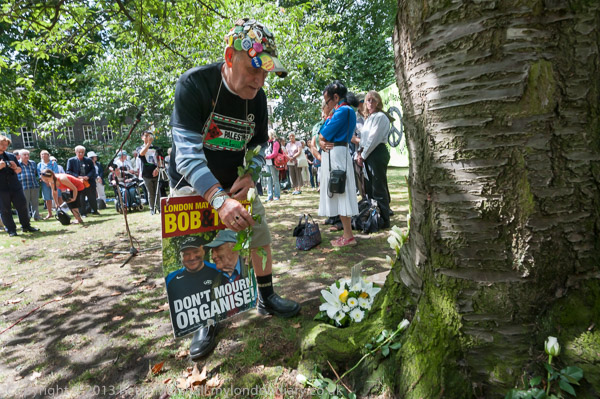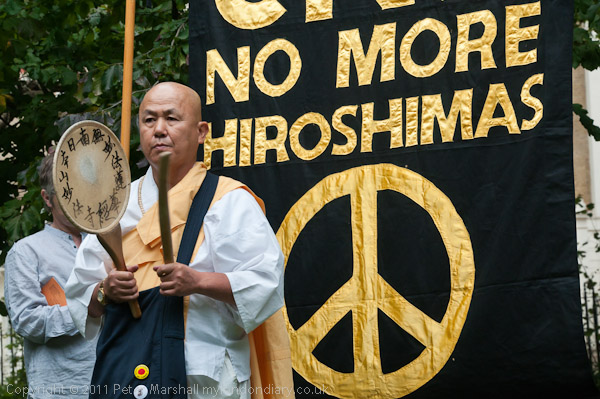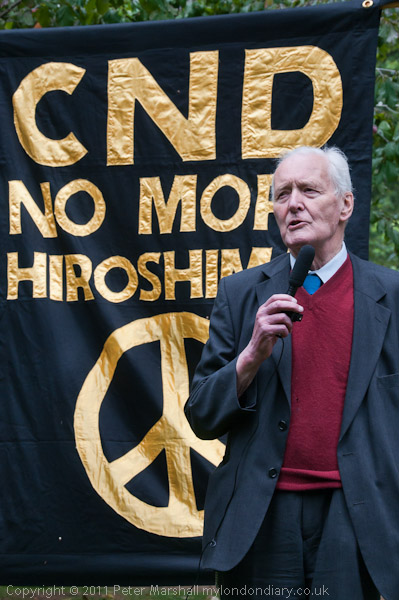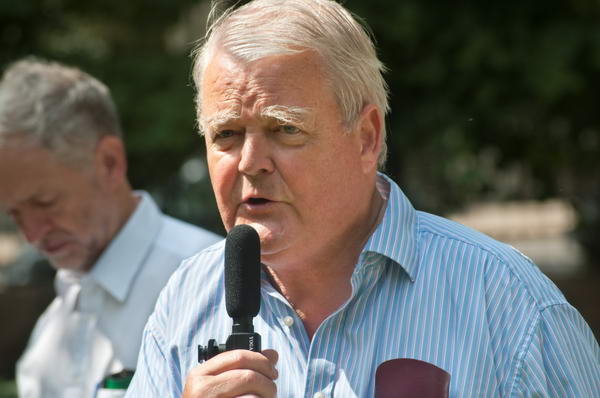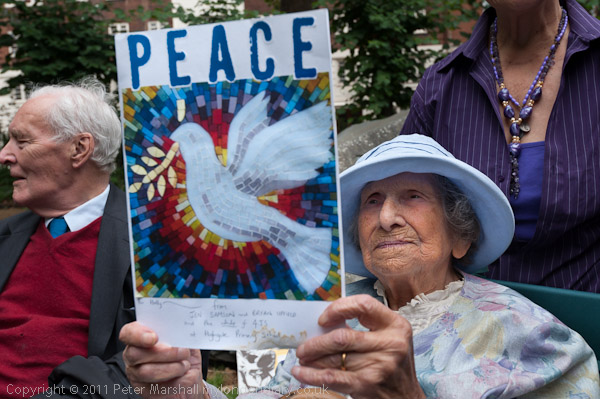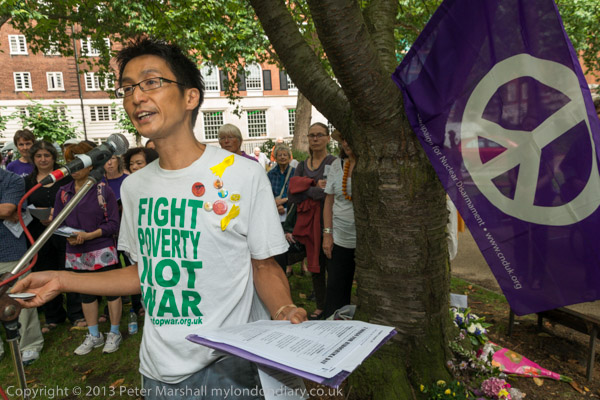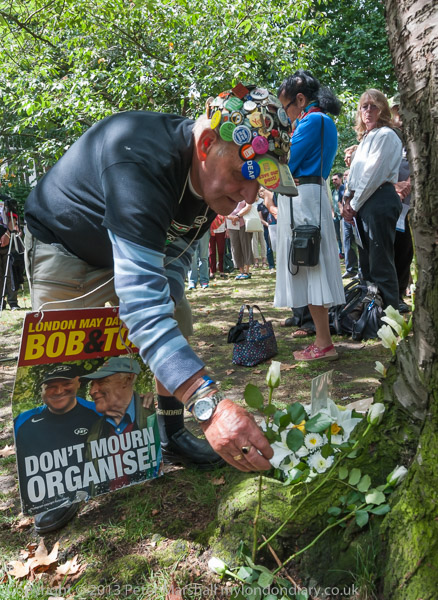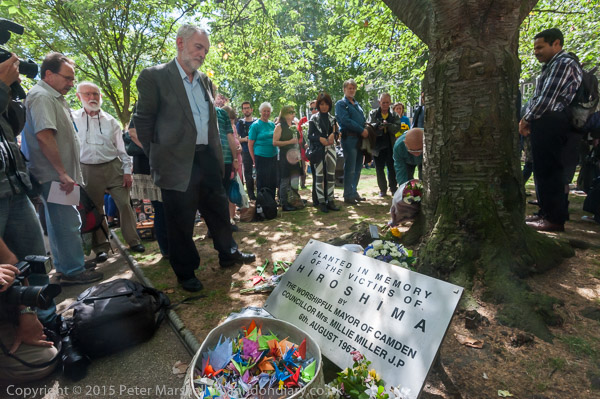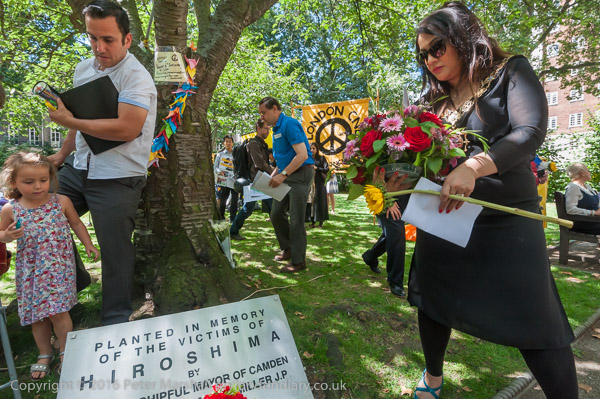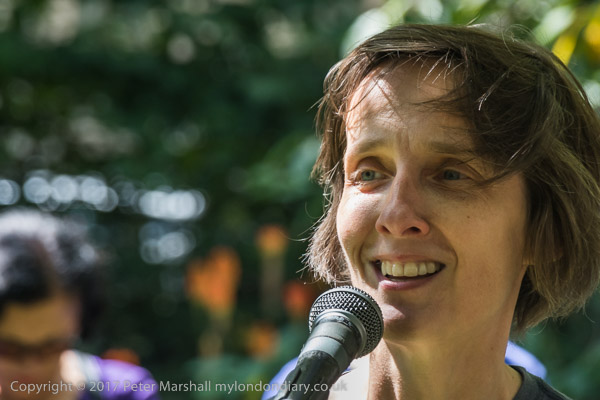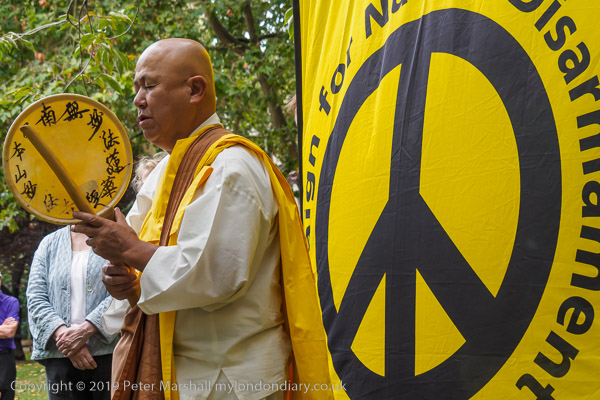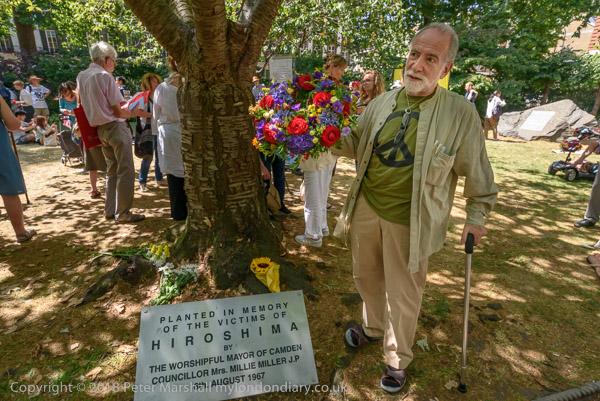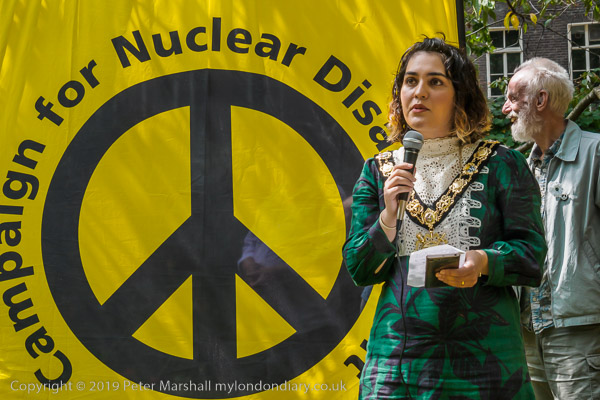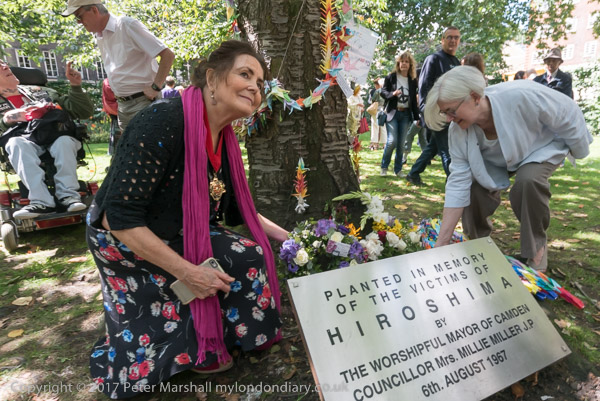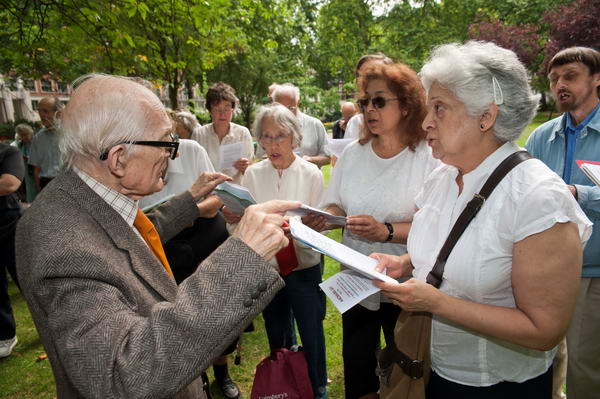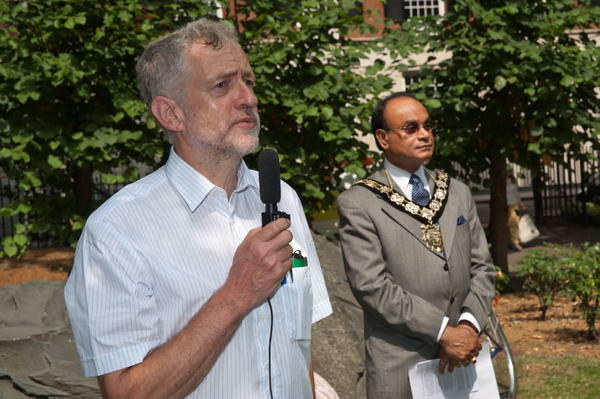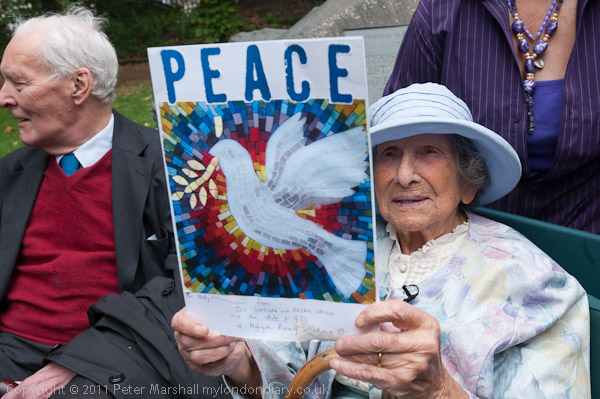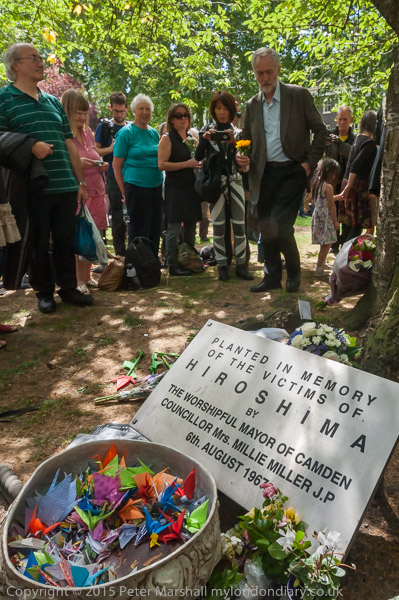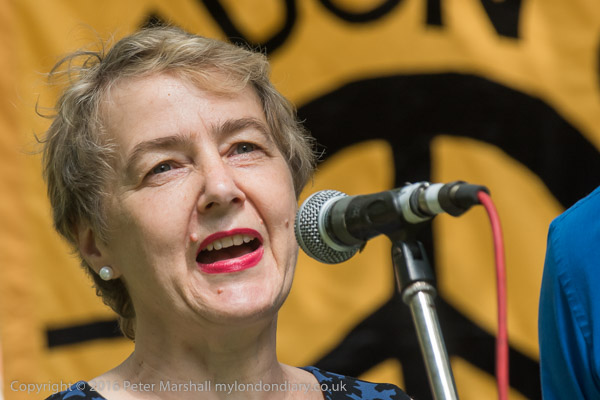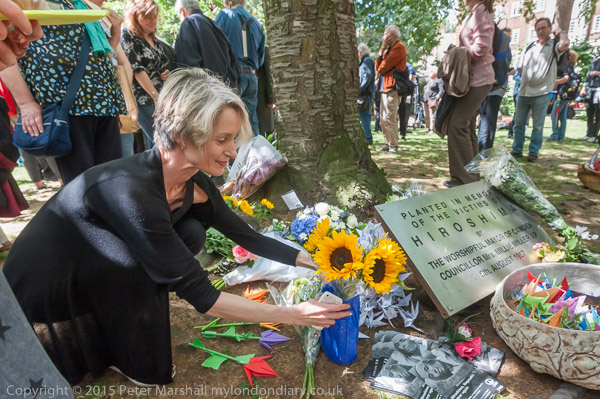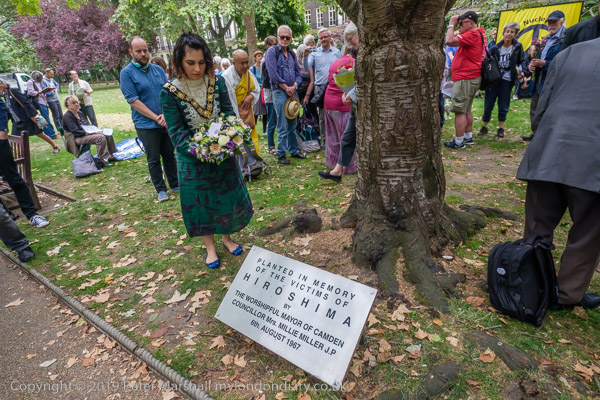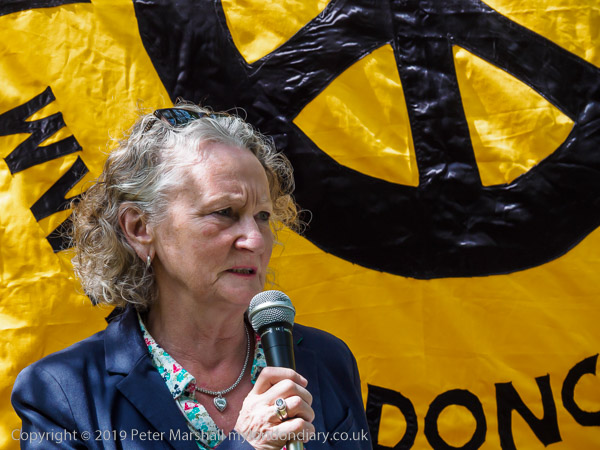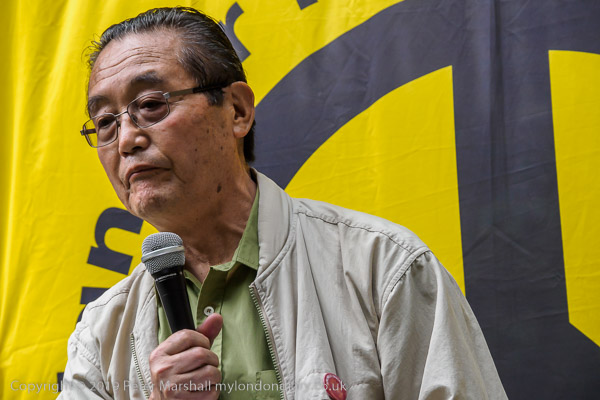VE Day 60 Years On: Twenty Years ago Britain had a two day major celebration of the end of the war in Europe on 8th May 1945, and I wrote about this both at the time on My London Diary and last year here on >Re:PHOTO at VE Day 60 Years On – 2005.
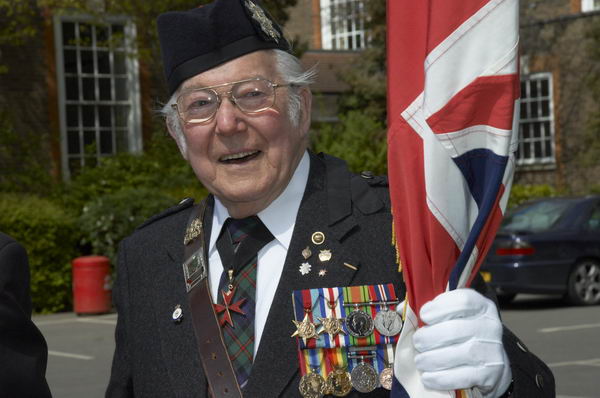
Of course it wasn’t the end of the war, which continued against Japan for another 3 months, only brought to an end following the dreadful revelation of the power of nuclear weapons to destroy whole cities at Hiroshima and Nagasaki. The huge civilian deaths these caused may have shortened the war by a few days, but probably a USA determined to bring it to an end might have achieved a settlement earlier had some not wanted this more spectacular and deadly finale.
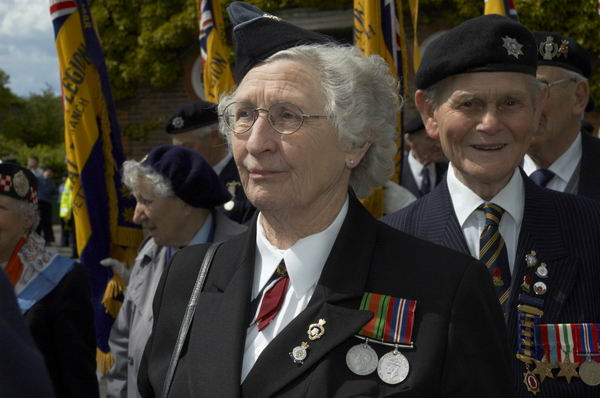
I grew up among many who had fought in WW2 and some who had lost fathers, uncles, cousins and brothers. There was a strong feeling that while the First World War which had been known as ‘The War to end all Wars’ had not proved to do so, this one should lead to an era of peace on the world.
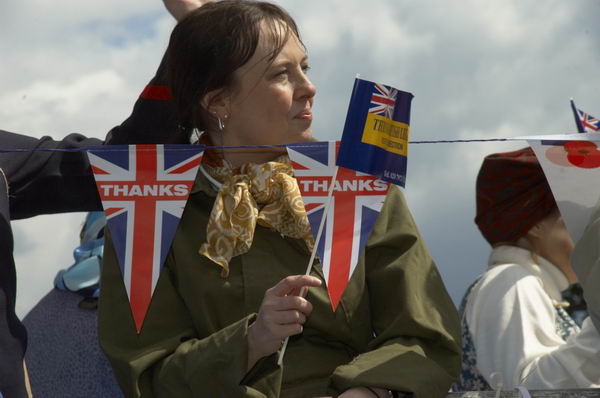
It was this spirit that led to the foundation of the United Nations, and to developments such as the 1948 Universal Declaration of Human Rights, both of which are now very much under threat. And of course the war led to a Labour government which brought in reforms including the setting up of the NHS.
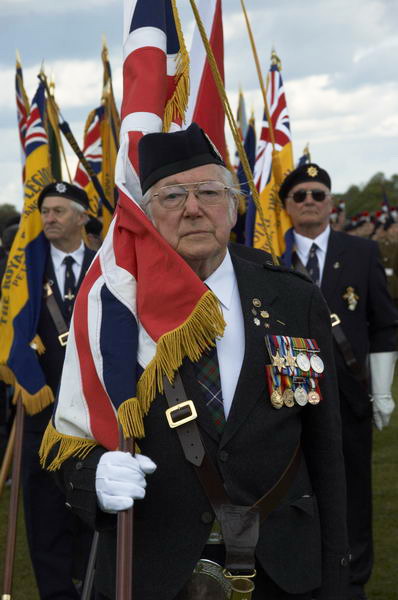
Peace did not last long, at least in part because it was not good for business. In part it was replaced by the ‘Cold War’ but there have been plenty of hot wars too. The world has seen war after war since VE day, many of which have involved either the USA or the UK, either actively with “boots on the ground”, or supporting one or sometimes both sides in the conflict openly or clandestinely and selling them the weapons with which to fight. There is a long list of wars the UK has been actively involved in on Wikipedia, since 1946 as well as a longer list for the USA which includes some others the UK was involved in.

The Cold War should have come to an end with the end of the Soviet Union in August 1991, but the ‘hawks’ were determined to keep it going rather than work with Russia. Had they not done so things might have been very different and Russia would not have felt the need for a strong president which led to the appointment of Putin.
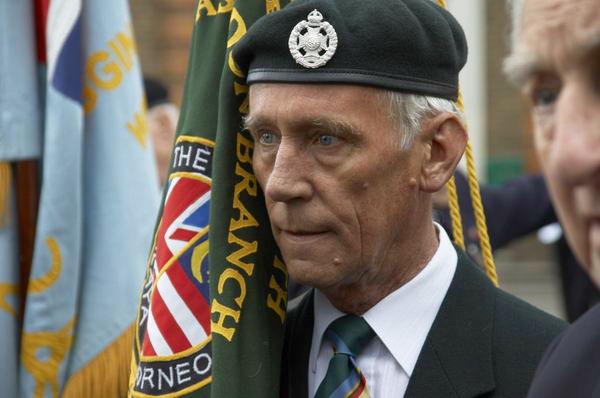
Recently British jets have bombed the Houthis in Yemen, and the UK has sold arms to Saudi Arabia to be used against them in the war there. And the UK has given diplomatic support and supplied arms for the Israeli government for the genocide in Gaza, as well as carrying out reconnaissance flights for Israel over Gaza from RAF Akrotiri in Cyprus to enable them to locate targets.

There are now relatively few survivors who actually fought in World War 2, although it was estimated that “under 70,000” British WW2 veterans were still alive, aged between 95 and 112.
My London Diary 2005
VE Day 60 Years On – 2005
Flickr – Facebook – My London Diary – Hull Photos – Lea Valley – Paris
London’s Industrial Heritage – London Photos
All photographs on this page are copyright © Peter Marshall.
Contact me to buy prints or licence to reproduce.
